New England’s covered bridges represent a unique intersection of historic architecture and modern recreational paddling, where centuries-old timber construction spans waterways that continue to provide excellent kayaking opportunities. These wooden bridges, built primarily in the 19th century to protect their structural timbers from harsh New England weather, now serve as picturesque landmarks along some of the region’s most scenic paddling routes.
The experience of gliding beneath these historic structures in a kayak offers a perspective that few people get to enjoy, combining the tranquility of river travel with intimate views of craftsmanship that has endured for generations. Many of these bridges span rivers that offer gentle paddling suitable for beginners. In contrast, others challenge experienced kayakers with Class II and III rapids that make the journey to reach them part of the adventure.
Here is a list of 20 New England covered bridges that can be reached and paddled under by kayak, offering unique combinations of historical architecture and scenic waterway exploration.
West Arlington Covered Bridge, Vermont
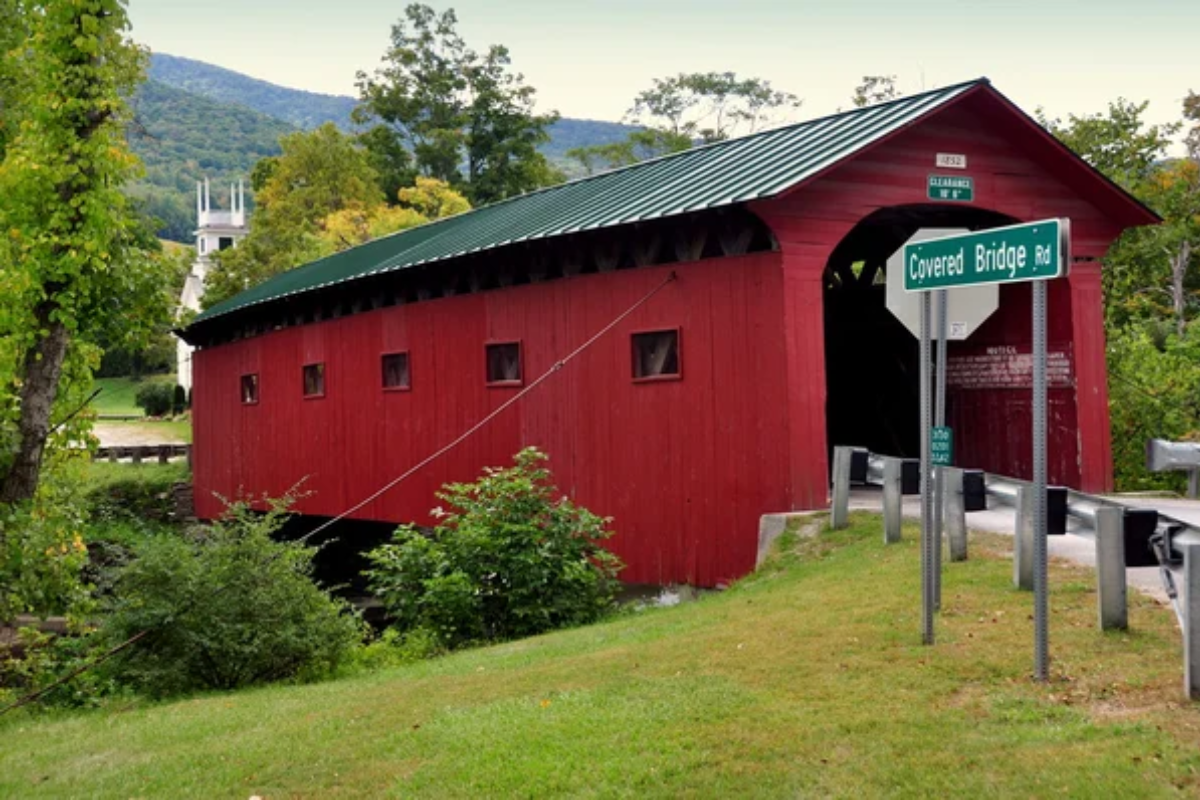
The West Arlington Covered Bridge spans the Battenkill River, providing kayakers with access to one of Vermont’s most famous trout streams and a classic 1852 Town lattice truss bridge. This 80-foot span sits in the heart of Norman Rockwell country, where the artist lived and painted many of his most famous works featuring Vermont rural life.
The Battenkill offers gentle Class I paddling that’s perfect for beginners, with clear water that allows paddlers to observe the river’s famous trout population while approaching this beautifully preserved bridge.
Cornish-Windsor Covered Bridge, New Hampshire/Vermont
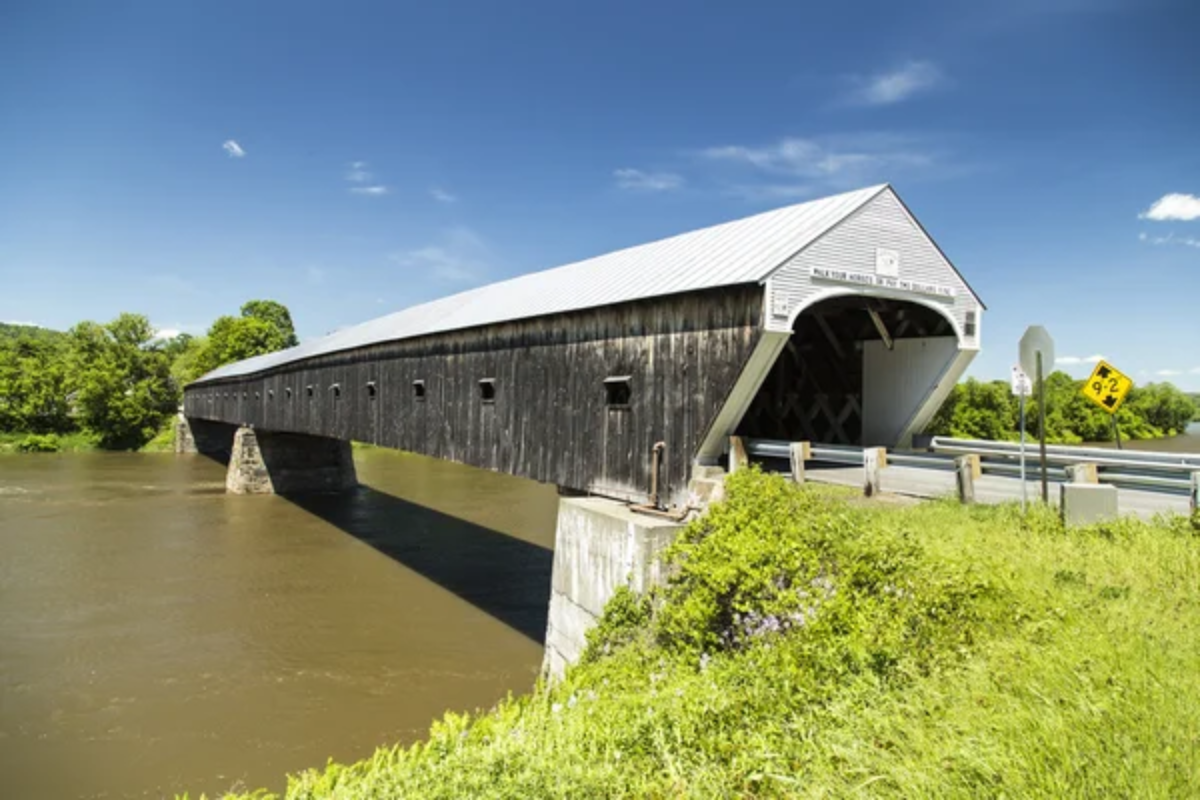
The Cornish-Windsor Covered Bridge stretches 460 feet across the Connecticut River, making it the longest covered bridge in the United States and a spectacular destination for interstate kayaking adventures. Built in 1866, this two-span Town lattice truss bridge connects New Hampshire and Vermont while providing paddlers with gentle river conditions suitable for all skill levels.
The Connecticut River here offers a wide, slow-moving channel perfect for photography and leisurely exploration of this National Historic Landmark.
Like Travel Pug’s content? Follow us on MSN.
Bath Covered Bridge, New Hampshire
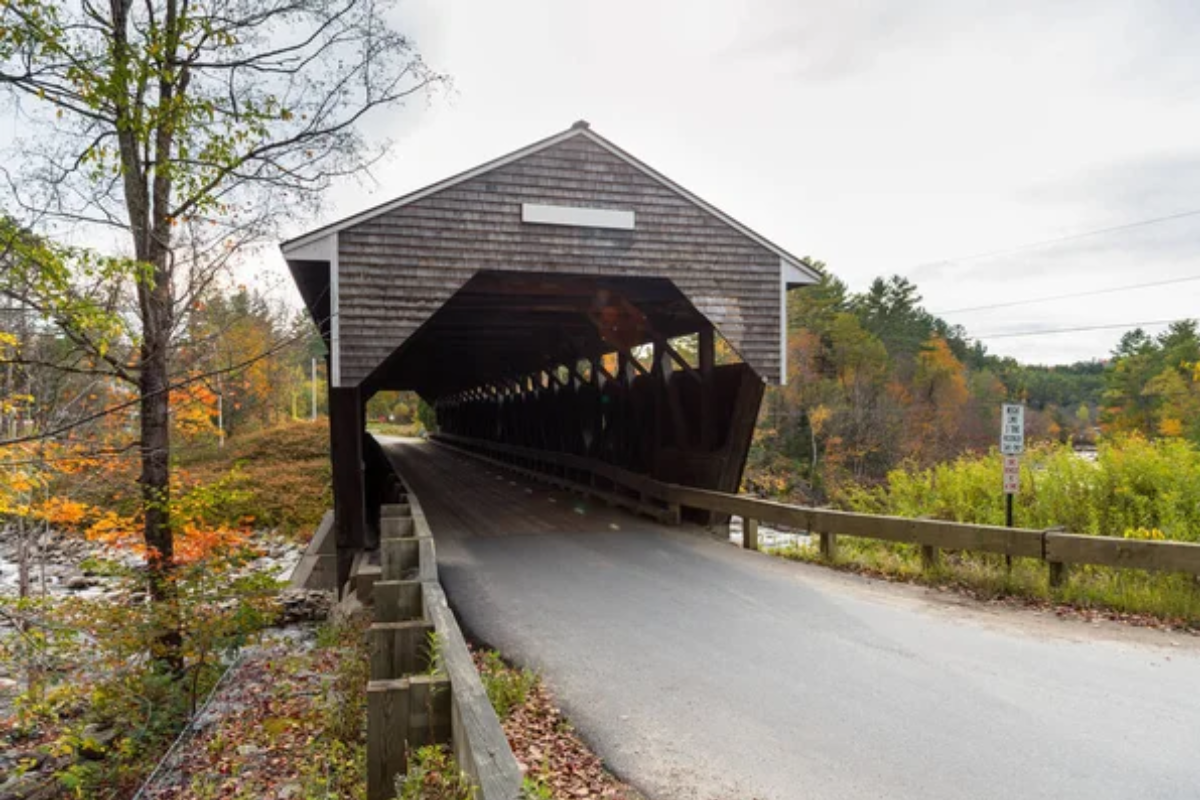
The Bath Covered Bridge, with its distinctive red paint and white trim, spans the Ammonoosuc River, creating a classic New England scene that kayakers can appreciate from the unique perspective of the water below. This 1832 bridge features Town lattice truss construction and sits along a section of river that offers gentle paddling through rural countryside.
The Ammonoosuc here provides Class I conditions that allow paddlers to take their time photographing and enjoying this well-preserved example of 19th-century bridge engineering.
Artist’s Covered Bridge, Vermont
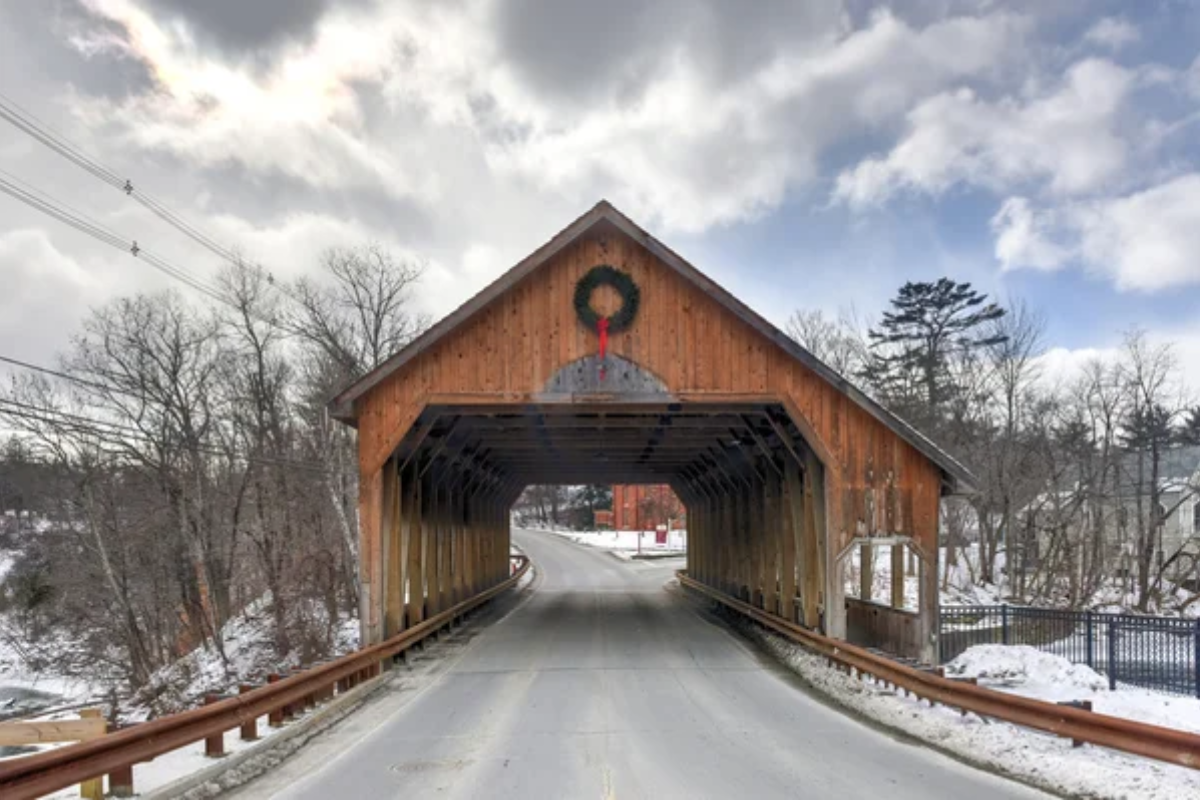
The Artist’s Covered Bridge over the Sunday River in Newry offers kayakers a chance to paddle beneath the bridge that graces countless New England postcards and calendars. This 1872 bridge features a distinctive weathered appearance that photographers love, while the Sunday River provides gentle Class I paddling through scenic countryside.
The approach to the bridge takes paddlers through pastoral landscapes that epitomize the New England rural experience.
Burkeville Covered Bridge, Vermont
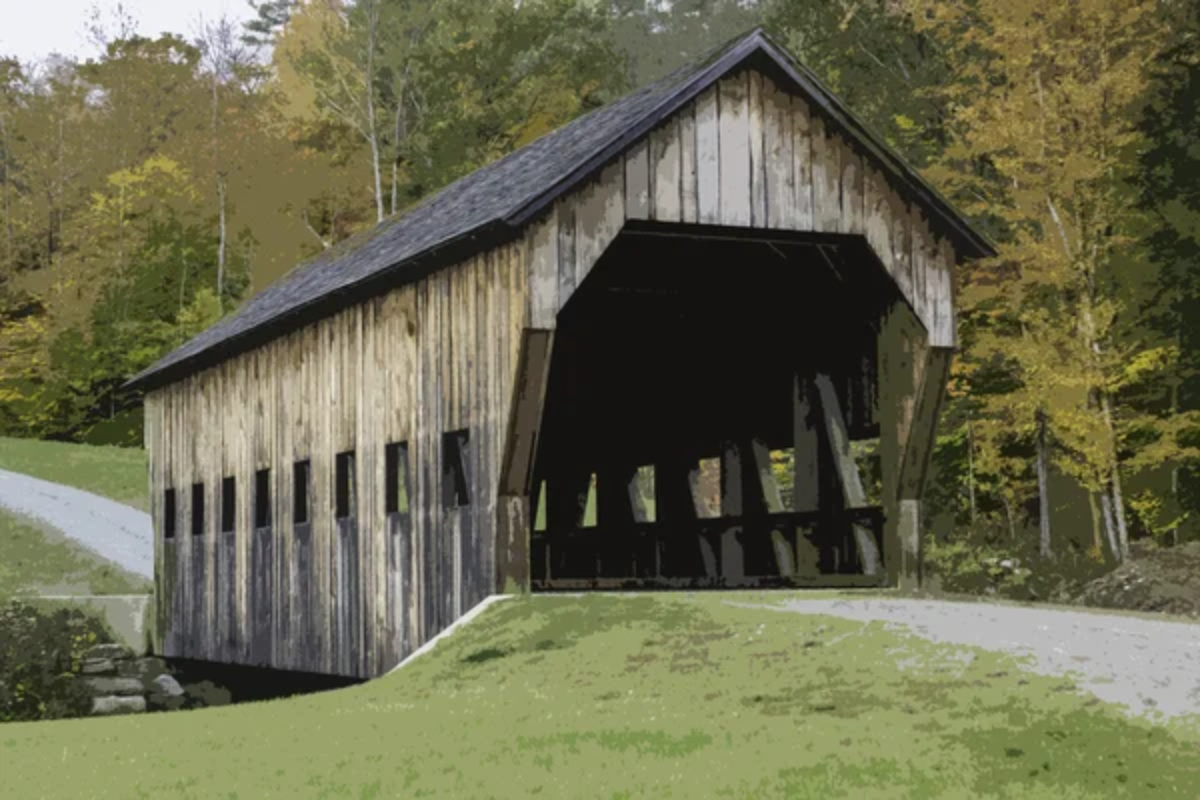
The Burkeville Covered Bridge spans the South River with its 1870 Town lattice truss construction providing kayakers with views of traditional Vermont craftsmanship from below. This 117-foot bridge sits along a section of river that offers Class I paddling through working farmland and forest.
The South River’s clear water and gentle current make this an ideal destination for families and beginning paddlers who want to experience covered bridge kayaking without challenging water conditions.
Like Travel Pug’s content? Follow us on MSN.
Chiselville Covered Bridge, Vermont

The Chiselville Covered Bridge crosses Roaring Brook with its 1870 construction, creating a picturesque scene that kayakers can enjoy from the unique perspective of the water flowing beneath. This small bridge spans a tributary that requires careful timing with water levels, as the narrow stream can become too shallow for kayaking during dry periods.
When conditions are right, the intimate scale of this bridge and its setting create one of Vermont’s most charming covered bridge paddling experiences.
Emily’s Bridge, Vermont
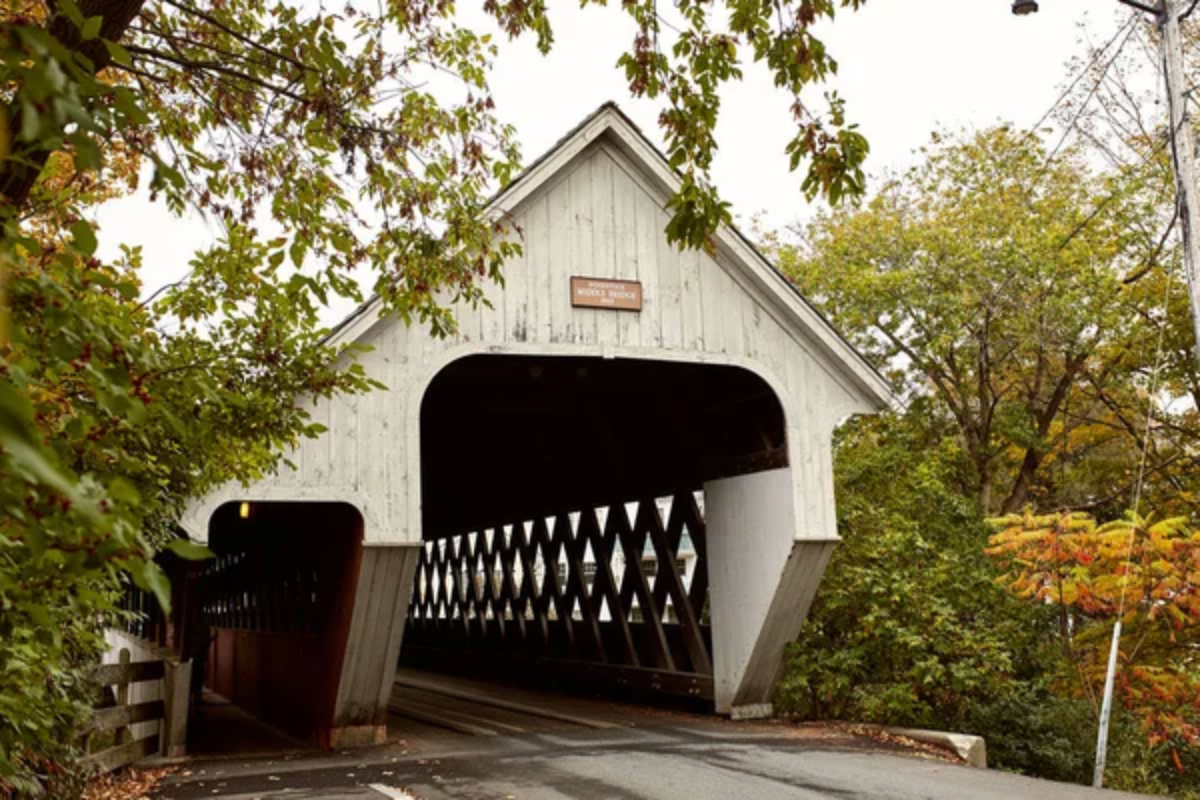
Emily’s Bridge in Stowe spans the Gold Brook, offering kayakers access to one of Vermont’s most famous and allegedly haunted covered bridges. Built in 1844, this bridge combines historical significance with local folklore, creating an atmospheric paddling destination that appeals to both history buffs and ghost story enthusiasts.
The Gold Brook provides gentle Class I paddling through the scenic Stowe valley, with the bridge serving as a memorable waypoint along longer paddling routes.
Cilleyville Covered Bridge, New Hampshire

The Cilleyville Covered Bridge, built in 1887, spans the Contoocook River, providing paddlers with views of late 19th-century covered bridge design and engineering. This 81-foot bridge sits along a section of river that offers Class I-II paddling, with occasional small rapids that add excitement without creating serious challenges for intermediate paddlers.
The Contoocook River here flows through mixed forest and farmland that showcase central New Hampshire’s diverse landscapes.
Like Travel Pug’s content? Follow us on MSN.
Keniston Covered Bridge, New Hampshire
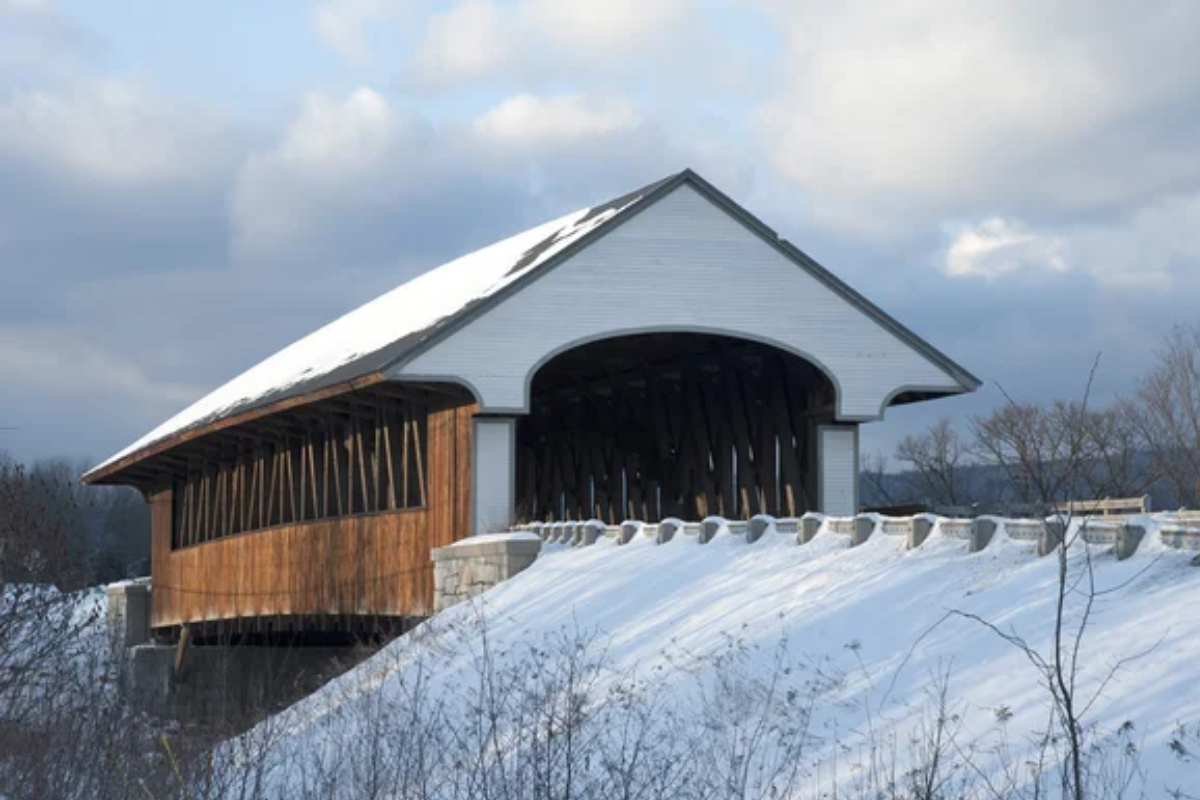
The Keniston Covered Bridge crosses the Sugar River with its 1882 Town lattice truss construction, creating a classic New Hampshire scene that kayakers can appreciate from below. This 120-foot bridge spans a section of river that provides Class I paddling through rural countryside where wildlife sightings are common.
The Sugar River’s clear water and moderate flow create ideal conditions for photography and leisurely exploration of this well-maintained historic bridge.
Blow-Me-Down Covered Bridge, New Hampshire
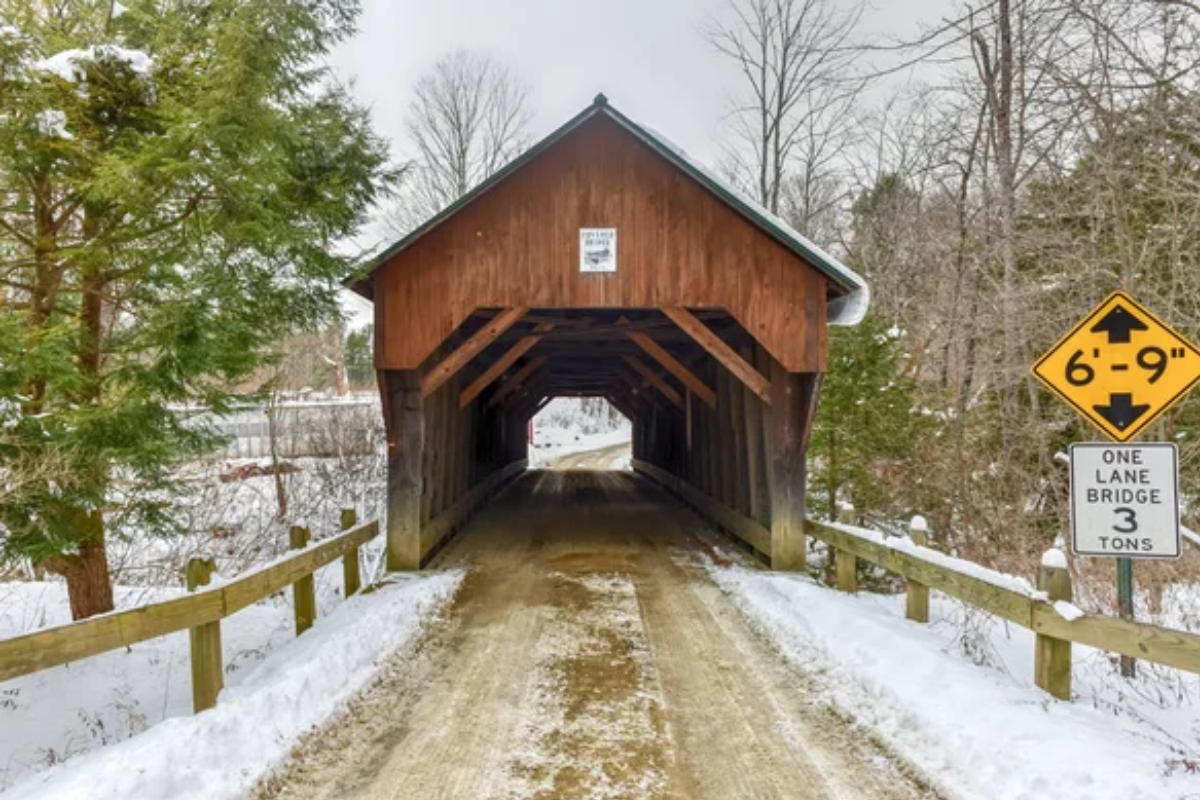
The Blow-Me-Down Covered Bridge, with its distinctive name and 1877 construction, spans the Ashuelot River, creating one of New Hampshire’s most memorable covered bridge kayaking destinations. This 87-foot bridge sits along a section of river that offers Class I-II paddling through diverse landscapes ranging from farmland to forest.
The Ashuelot River provides reliable water levels through most of the paddling season, making this bridge accessible to kayakers from spring through fall.
Blacksmith Shop Covered Bridge, Vermont
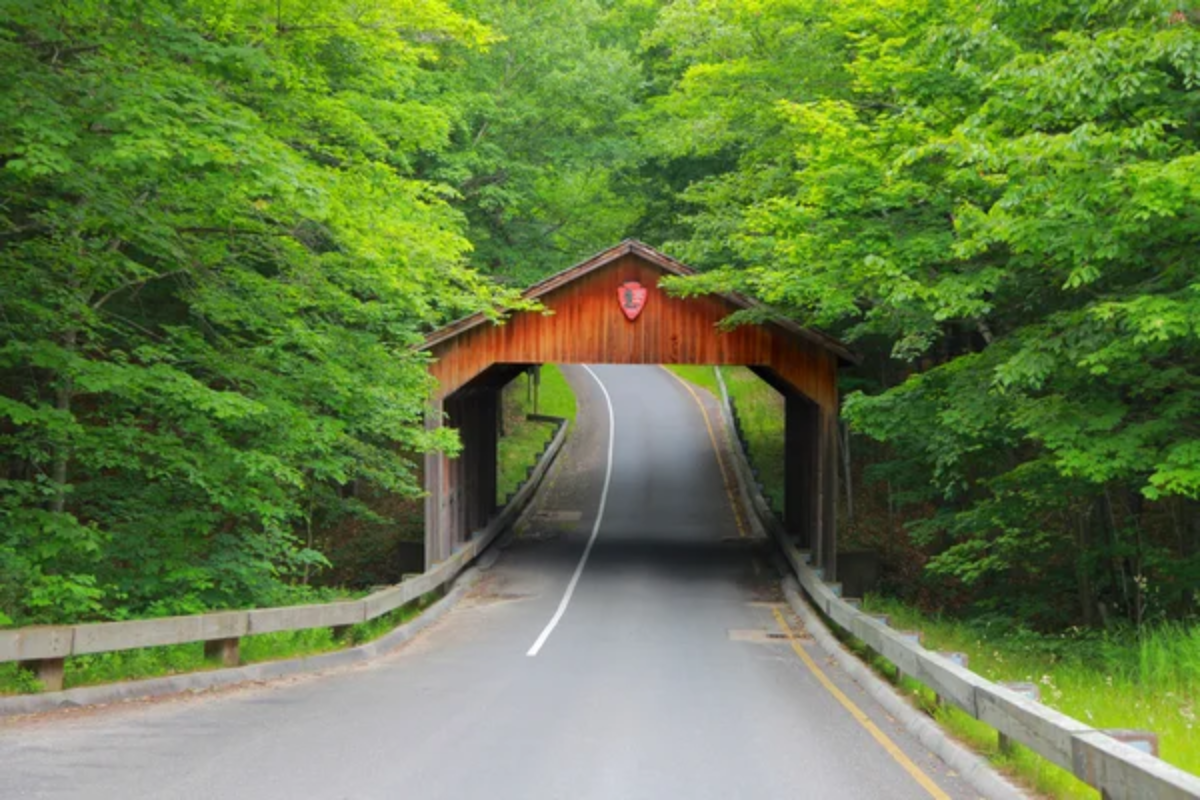
The Blacksmith Shop Covered Bridge, built in 1890, crosses the North Branch of the Lamoille River, providing kayakers with access to one of Vermont’s more remote covered bridge locations. This 118-foot bridge requires a longer paddle to reach, but it rewards visitors with a sense of discovery and solitude that’s increasingly rare in popular covered bridge destinations.
The North Branch offers Class I-II paddling through forest landscapes that feel wild despite being relatively close to populated areas.
Like Travel Pug’s content? Follow us on MSN.
Paper Mill Village Bridge, Vermont
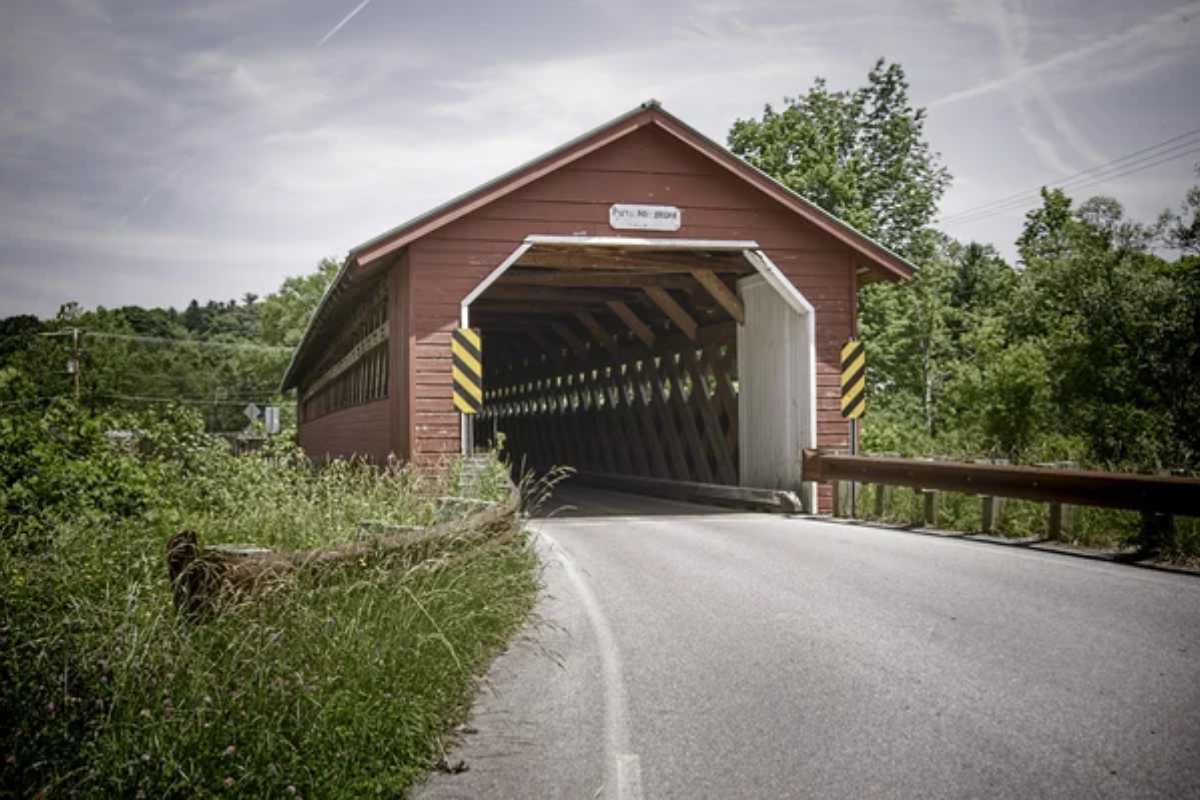
The Paper Mill Village Bridge spans the Ottauquechee River, and its 1889 construction created a picturesque scene that combines industrial history with natural beauty. This 110-foot bridge sits in a village setting where an old paper mill adds historical context to the paddling experience.
The Ottauquechee River here provides Class I-II paddling with occasional small ledges that create excitement for intermediate paddlers while remaining manageable for those with basic whitewater skills.
Comstock Covered Bridge, Vermont

The Comstock Covered Bridge, with its 1883 town lattice construction, crosses the Missisquoi River, providing paddlers with access to one of Vermont’s lesser-known covered bridge gems. This 87-foot span sits along a section of river that offers Class I paddling through rural landscapes where traditional farming practices continue.
The intimate scale of both the bridge and the river creates a paddling experience that feels like stepping back in time to 19th-century Vermont.
Dalton Covered Bridge, New Hampshire
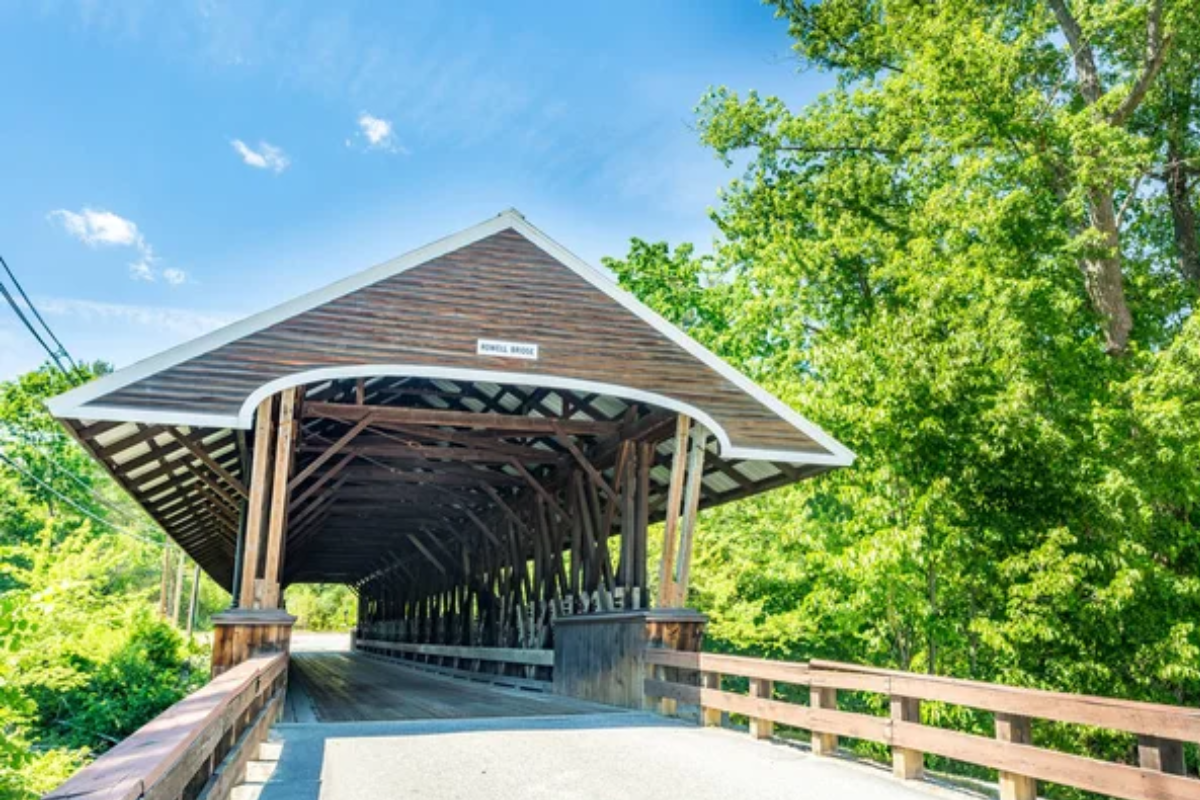
The Dalton Covered Bridge spans the Israel River, and its 1935 construction represents one of the newer covered bridges that kayakers can explore. This 150-foot bridge demonstrates how covered bridge traditions continued into the 20th century while providing access to excellent Class I-II paddling on the Israel River.
The river here flows through the scenic White Mountain region, where mountain views enhance the covered bridge paddling experience.
Like Travel Pug’s content? Follow us on MSN.
Waitsfield Covered Bridge, Vermont
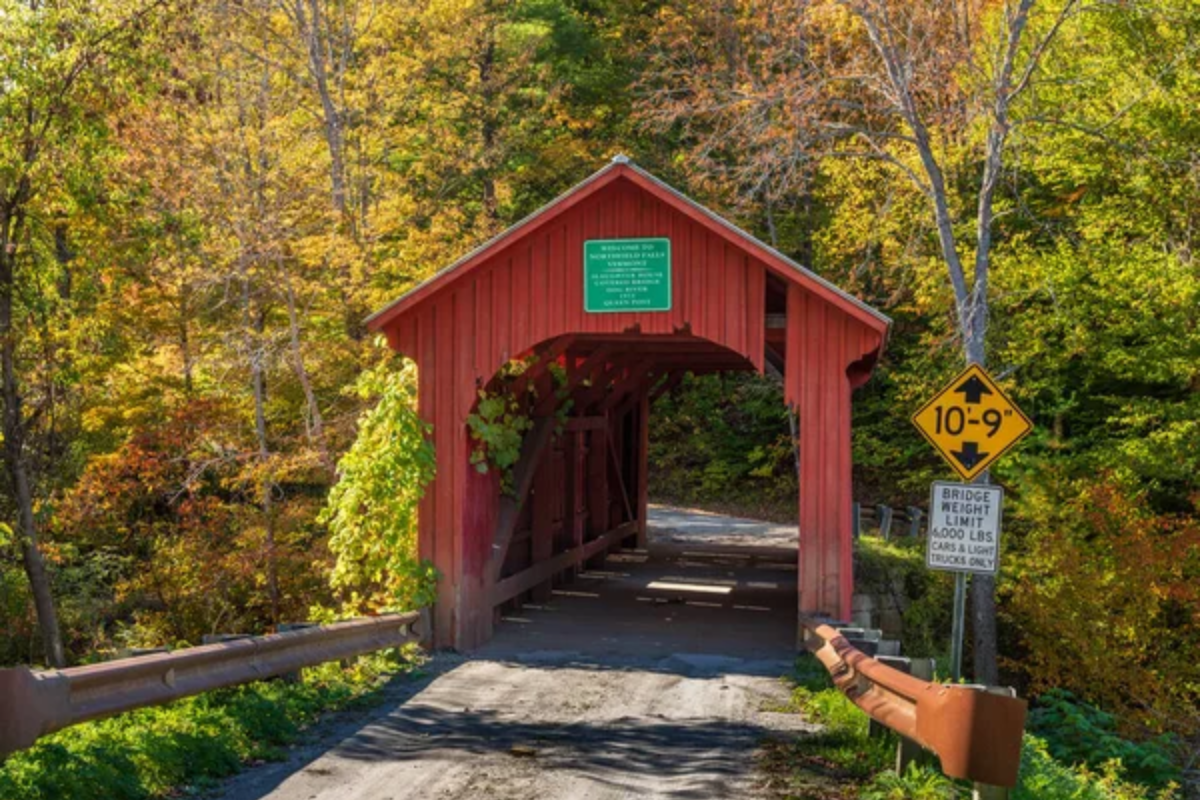
The Waitsfield Covered Bridge, built in 1833, crosses the Mad River, making it one of the older bridges accessible to kayakers in Vermont. This 125-foot bridge spans a section of river famous for its Class II-III whitewater, though calmer sections downstream provide gentler access for paddlers seeking covered bridge experiences without challenging rapids.
The Mad River Valley setting creates spectacular scenery that combines mountain views with rural Vermont countryside.
Larkin Covered Bridge, Vermont
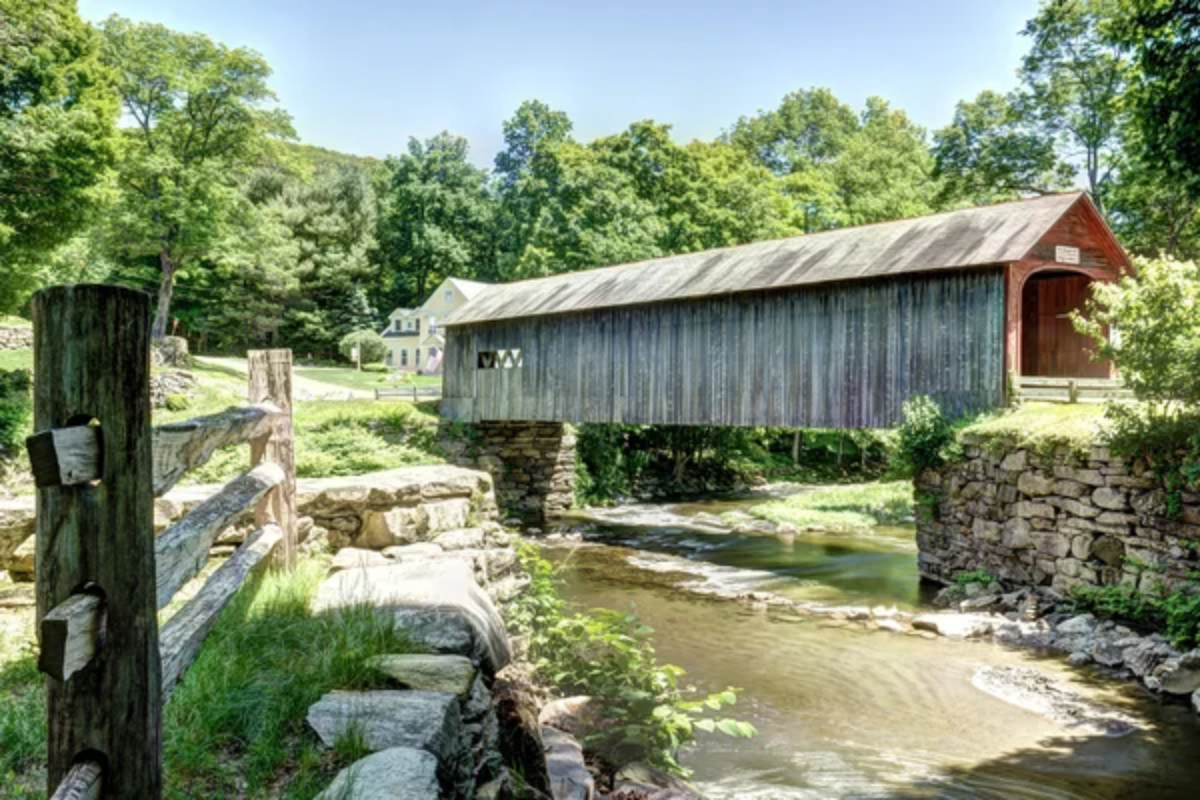
The Larkin Covered Bridge, built in 1902, spans Hubbard Brook, providing kayakers with access to one of Vermont’s more intimate covered bridge settings. This small bridge requires careful timing with water levels, as the narrow brook can become unnavigable during low water periods.
When conditions are favorable, the peaceful setting and well-preserved bridge create a magical paddling experience that captures the essence of rural Vermont.
Carleton Covered Bridge, New Hampshire
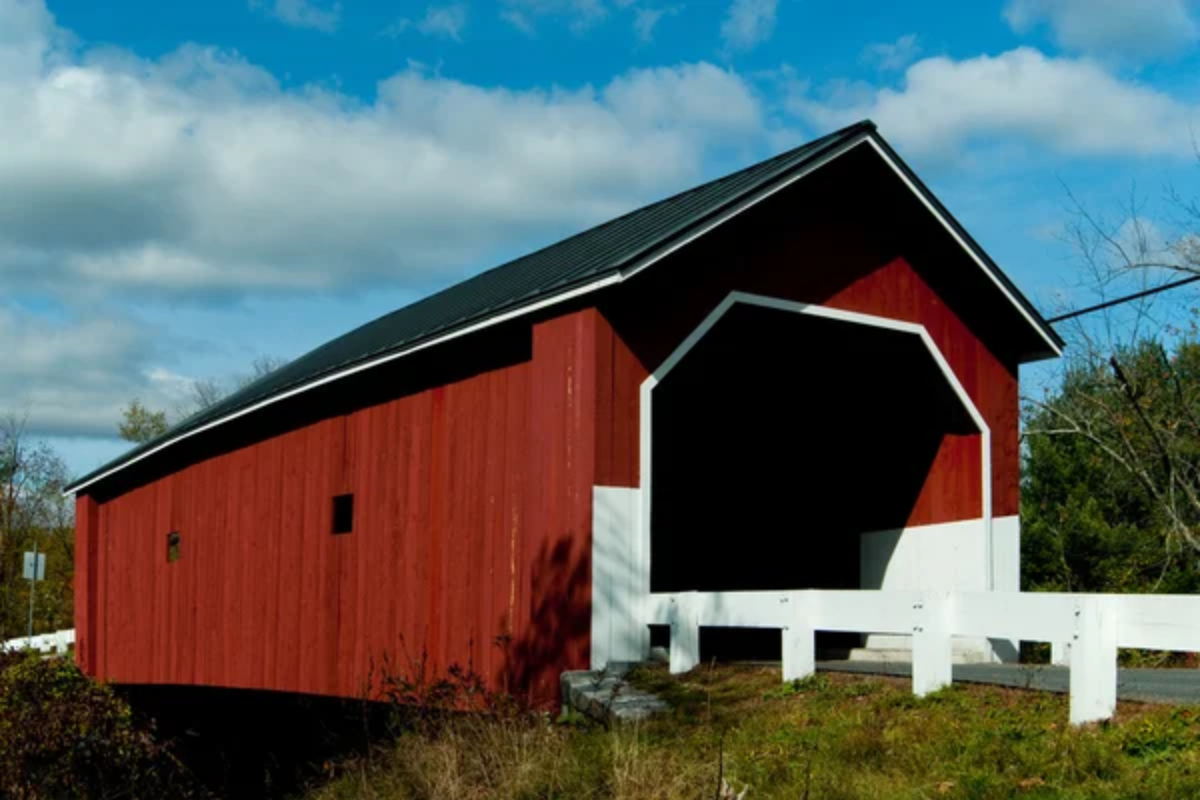
The Carleton Covered Bridge crosses the Ashuelot River with its 1869 construction creating a classic example of New Hampshire covered bridge architecture that kayakers can appreciate from below. This 90-foot bridge sits along a section of river that provides Class I paddling through countryside where historic farms and forests create scenic backdrops.
The Ashuelot River here maintains good water levels through most seasons, making this bridge reliably accessible to paddlers.
Like Travel Pug’s content? Follow us on MSN.
Flume Covered Bridge, New Hampshire
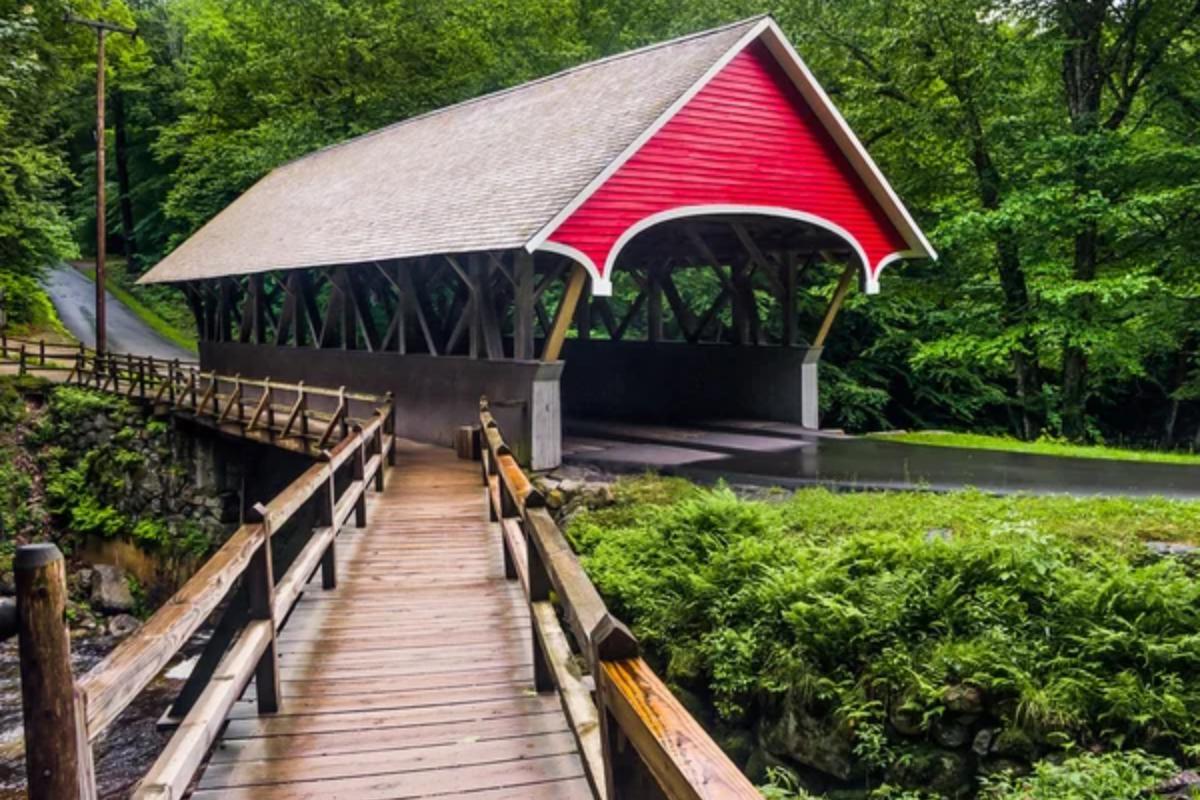
The Flume Covered Bridge spans the Pemigewasset River near the famous Flume Gorge, providing kayakers with access to spectacular White Mountain scenery combined with covered bridge history. This 1886 bridge sits along a section of river that offers Class II paddling with mountain views that rank among New Hampshire’s most scenic.
The combination of whitewater excitement and mountain scenery makes this one of New England’s premier covered bridge paddling destinations.
Martin Covered Bridge, Vermont
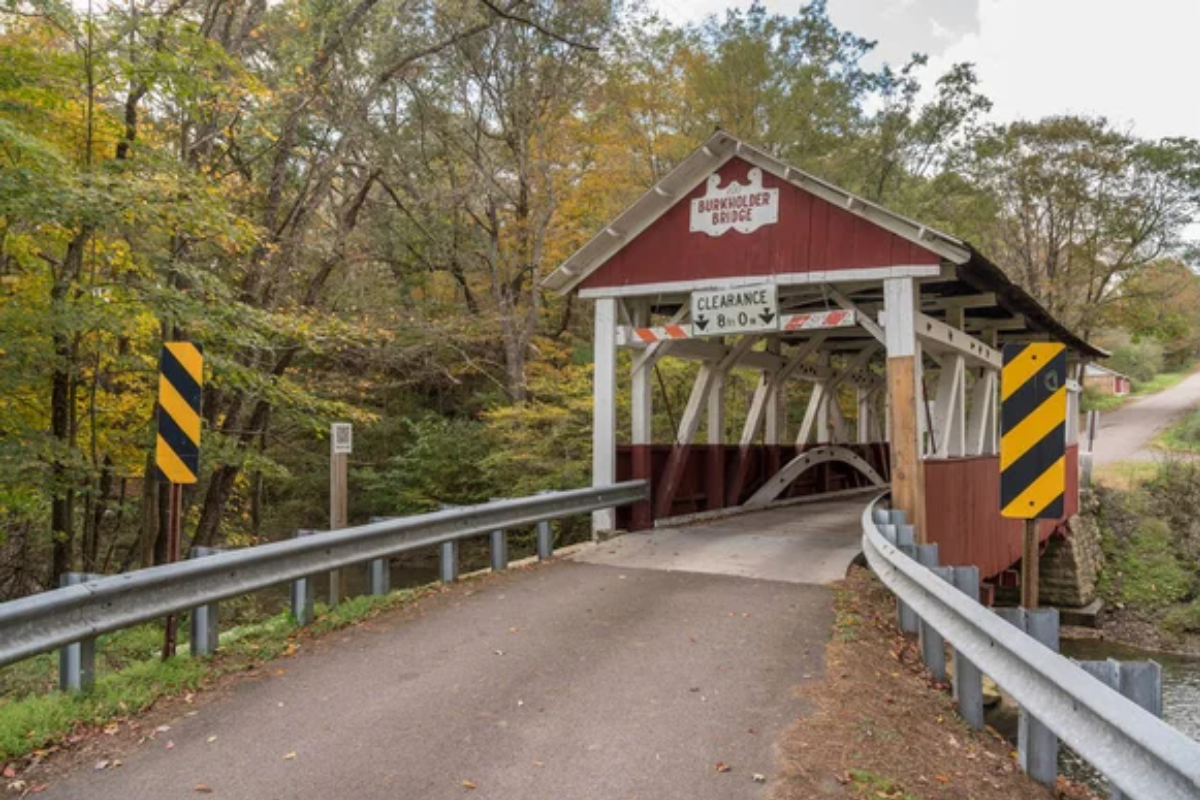
The Martin Covered Bridge crosses the Walloomsac River with its 1870 Town lattice construction providing paddlers access to southwestern Vermont’s rural landscapes. This 125-foot bridge spans a section of river that offers Class I-II paddling through countryside where working farms and forests create classic Vermont scenery.
The Walloomsac River here provides reliable water flow and manageable conditions for intermediate paddlers seeking covered bridge adventures.
Greenbanks Hollow Covered Bridge, Vermont
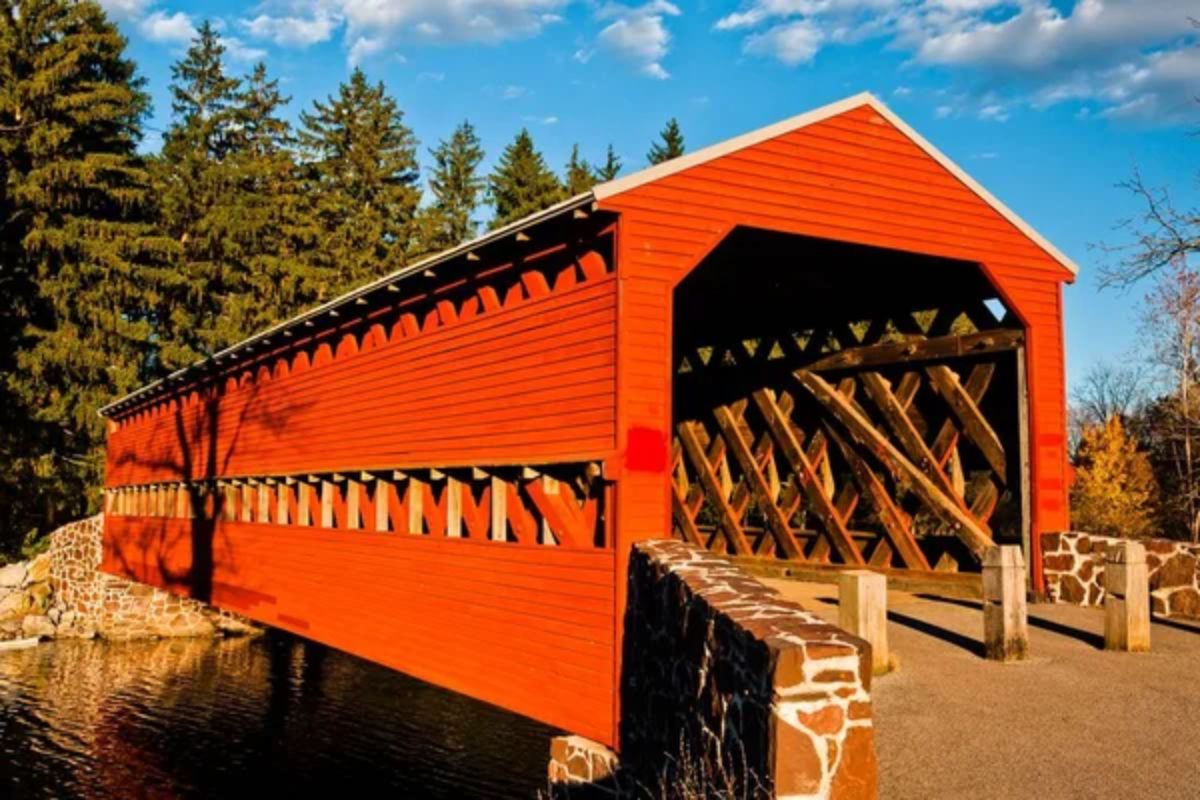
The Greenbanks Hollow Covered Bridge spans the Lamoille River. Its construction in 1881 created one of Vermont’s most photographed covered bridges, which kayakers can experience from the unique perspective of the water below. This 120-foot bridge sits along a section of river that provides Class I paddling through scenic valley landscapes.
The Lamoille River offers gentle conditions perfect for families and beginning paddlers who want to combine covered bridge exploration with easy river travel.
Like Travel Pug’s content? Follow us on MSN.
Paddling Through History
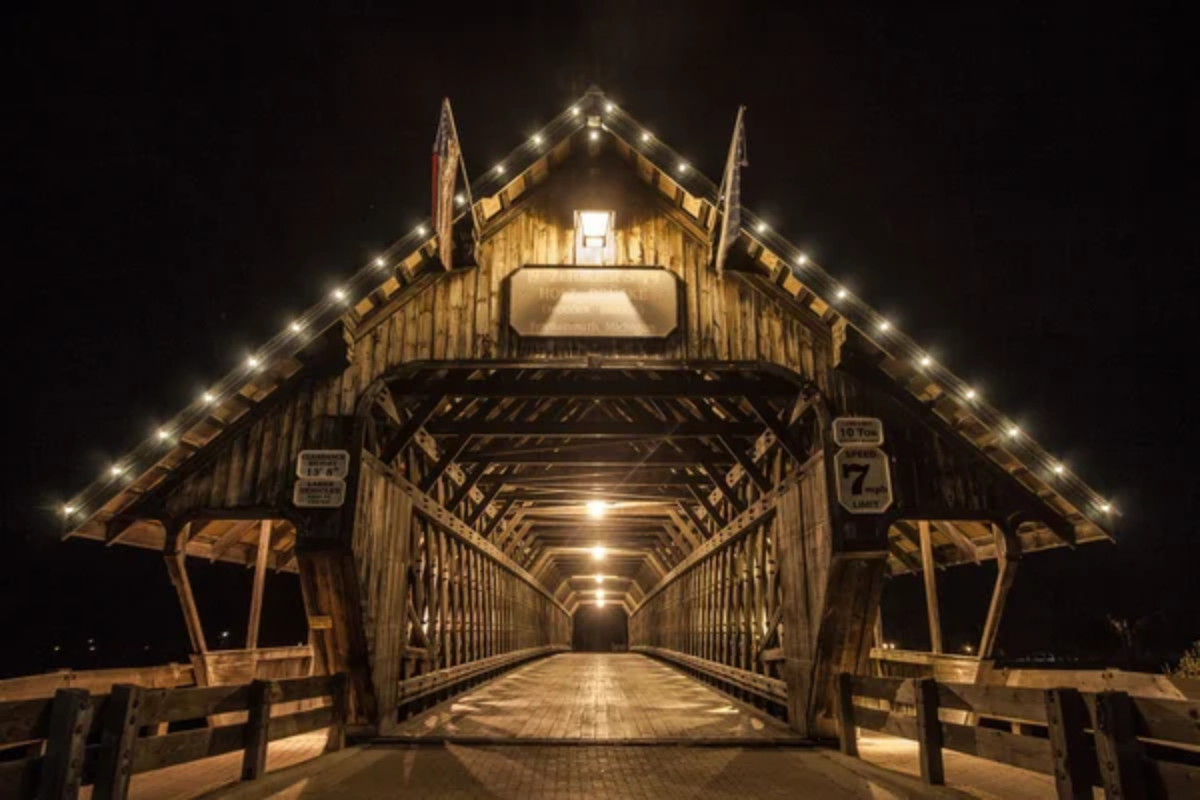
These remarkable covered bridges offer kayakers unique opportunities to experience New England’s architectural heritage from perspectives that few people ever enjoy. Kayaks glide silently beneath structures that have witnessed centuries of regional history.
The combination of gentle river travel and historic architecture creates experiences that connect modern outdoor recreation with the craftsmanship and ingenuity of previous generations who built these beautiful and functional structures. Each paddling trip to reach these bridges becomes a journey through landscapes that embody the essence of rural New England, where working farms, forests, and small communities continue traditions that stretch back to colonial times.
Whether seeking gentle family adventures or more challenging paddling routes, these covered bridge destinations provide memorable experiences that celebrate both New England’s natural beauty and its rich architectural heritage. They prove that some of the best ways to appreciate historical landmarks involve approaching them by the same waterways that made their construction necessary in the first place.
More from Travel Pug

- 20 Best Beach Towns in the Carolinas
- 13 Destinations Where Tourists Regularly Regret Their Trip
- 20 Destinations That Are More Magical Without an Itinerary
- 20 Underrated Adventures That Belong on Your Travel List
- 20 Cities Where You Should Just Wing It, No Planning Required
Like Travel Pug’s content? Follow us on MSN.
